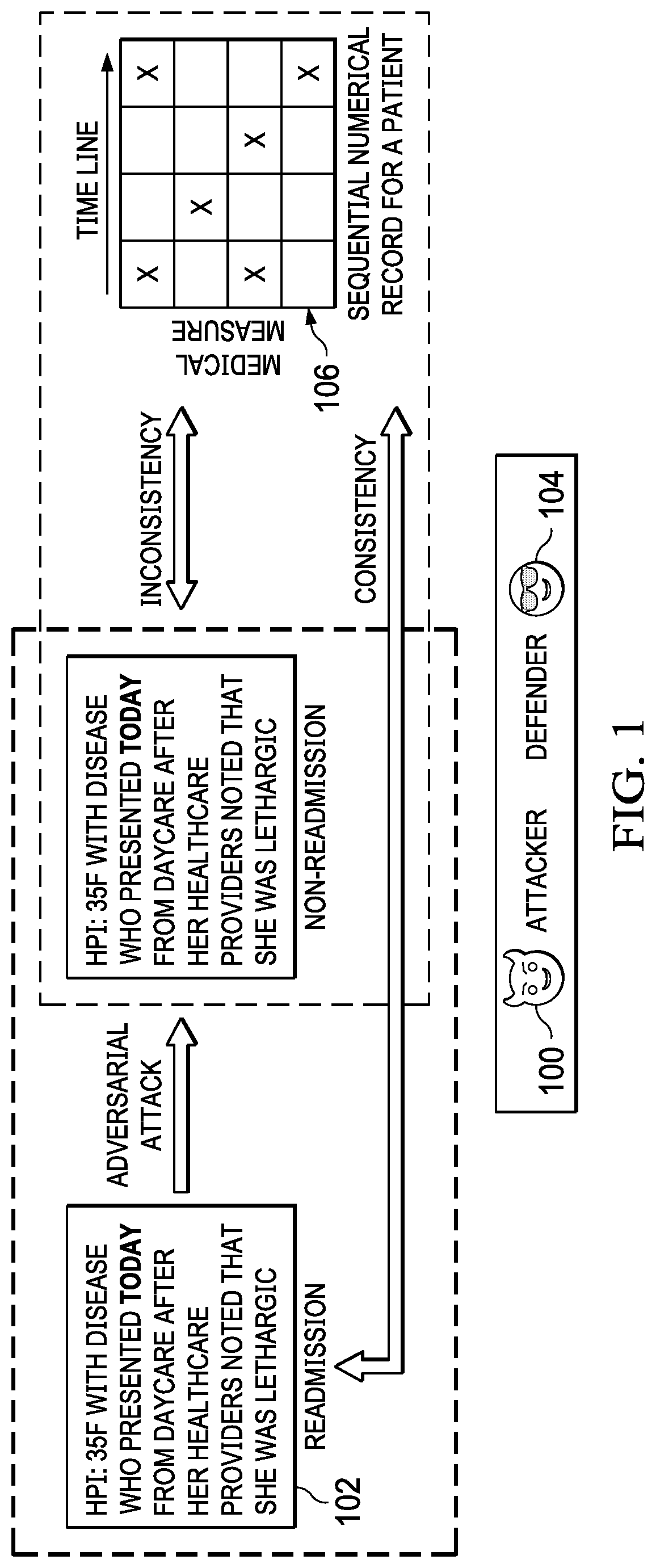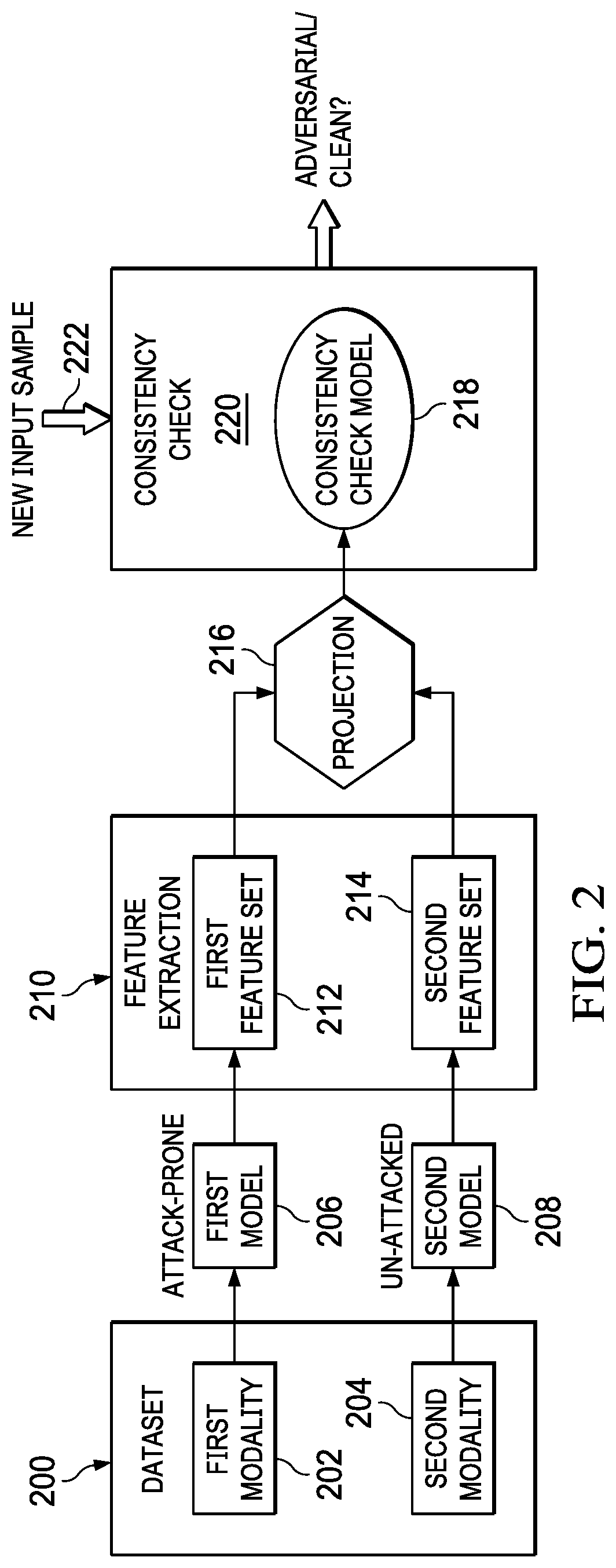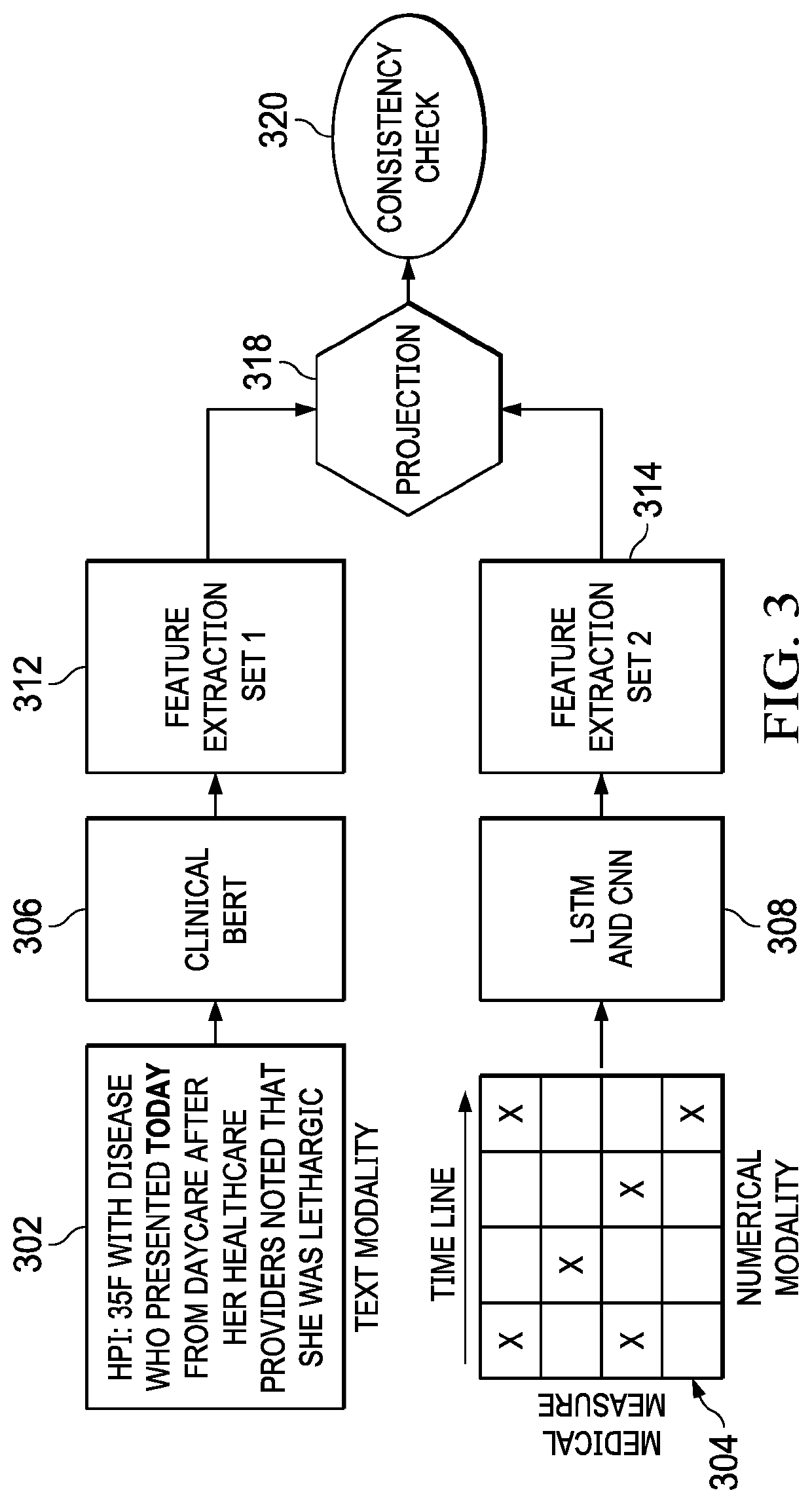Using multimodal model consistency to detect adversarial attacks
- Summary
- Abstract
- Description
- Claims
- Application Information
AI Technical Summary
Benefits of technology
Problems solved by technology
Method used
Image
Examples
Embodiment Construction
[0019]For exemplary purposes, the technique herein is described in a representative case study involving a medical machine learning (ML) system. These types of systems have been shown to be uniquely susceptible to adversarial attacks, in part due to high financial interests such as insurance claims. This example scenario is provided solely for descriptive purposes, and it is not intended to be limiting, as the multimodal model consistency checking technique herein is useful for any dataset having multiple modalities. In the example scenario, the machine learning is carried out on a hospital readmission prediction task using an electronic health record (EHR) dataset. More specifically, the task is used to predict a 30-day readmission risk. In this example, the EHR dataset consists of multiple modalities including sequential numerical data, clinical summary notes (text) and medical images (e.g., x-rays / MRIs, etc.) Among these different modalities, it is assumed that one of them, e.g.,...
PUM
 Login to View More
Login to View More Abstract
Description
Claims
Application Information
 Login to View More
Login to View More - R&D
- Intellectual Property
- Life Sciences
- Materials
- Tech Scout
- Unparalleled Data Quality
- Higher Quality Content
- 60% Fewer Hallucinations
Browse by: Latest US Patents, China's latest patents, Technical Efficacy Thesaurus, Application Domain, Technology Topic, Popular Technical Reports.
© 2025 PatSnap. All rights reserved.Legal|Privacy policy|Modern Slavery Act Transparency Statement|Sitemap|About US| Contact US: help@patsnap.com



